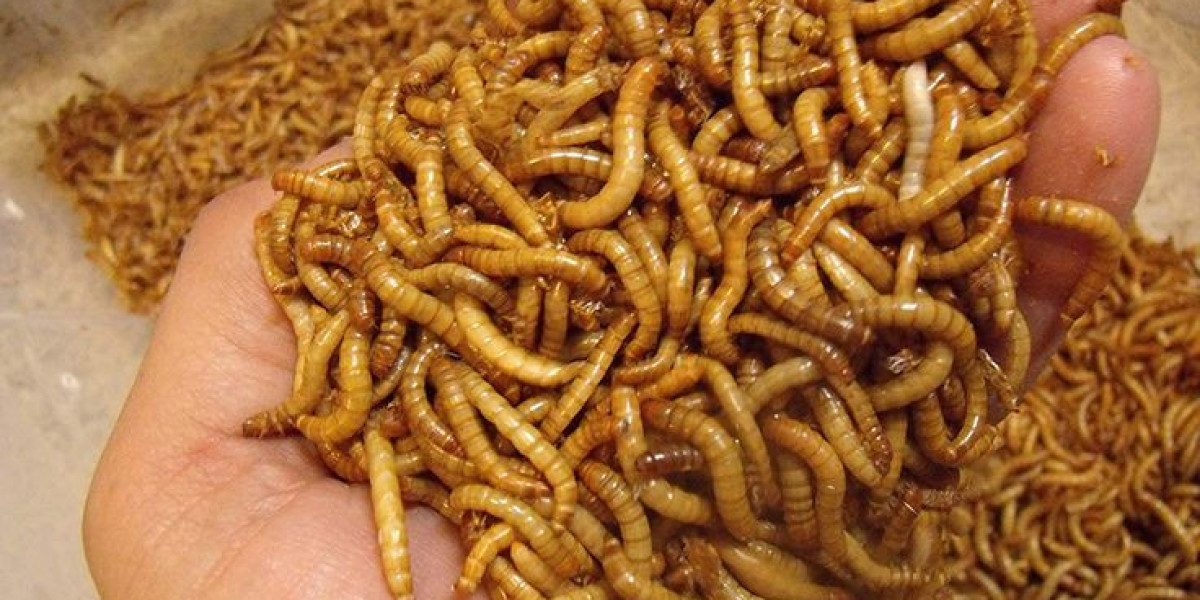The global demand for sustainable protein sources is accelerating, leading to the emergence of innovative alternatives in the feed and food industries. One such novel ingredient gaining traction is earthworm meal—a high-protein, nutrient-dense powder derived from dried and ground earthworms. As industries strive to reduce environmental impact while meeting nutritional demands, the earthworm meal market is gradually carving out a niche within the broader alternative protein space.
A Sustainable Protein Source
Earthworm meal offers a unique value proposition. It is rich in protein (typically 60–70%), essential amino acids, and micronutrients such as iron, calcium, and magnesium. Compared to traditional protein sources like fishmeal and soymeal, earthworm farming requires less water, space, and feed inputs. Additionally, earthworms can be cultivated using organic waste and agricultural byproducts, contributing to circular economy practices and reducing landfill burdens.
This sustainability aspect is a major factor fueling interest from industries such as aquaculture, poultry, pet food, and even health supplements. The mounting pressure on traditional protein sources due to overfishing, deforestation, and climate change has created an urgent need for sustainable alternatives—earthworm meal fits that need.
Market Drivers
Rising Demand for Animal Feed Protein Alternatives
The animal feed industry is the largest end-use sector for earthworm meal. With the rapid expansion of aquaculture and poultry industries worldwide, there is increasing demand for high-quality feed proteins. Traditional ingredients like fishmeal are becoming both expensive and ecologically unsustainable, prompting feed manufacturers to explore alternative proteins. Earthworm meal is emerging as a viable substitute due to its digestibility and nutritional profile.Growth of the Insect Protein and Circular Economy Movements
The success of insect-based proteins has paved the way for lesser-known alternatives like earthworm meal. Both share similar sustainability benefits and can be grown on organic waste. As consumer awareness of circular economy practices grows, so does interest in regenerative agriculture, where earthworms are seen as beneficial not only for soil health but also as a valuable biomass resource.Innovation and Research Support
Academic and industrial R&D is increasingly focused on sustainable feed solutions. Studies highlighting the effectiveness of earthworm meal in promoting animal growth, immunity, and overall health have spurred product development. Pilot projects in Southeast Asia, Africa, and South America have demonstrated the scalability and economic feasibility of earthworm meal production.Interest in Natural and Organic Products
Earthworm meal is also being explored in human nutrition as a superfood ingredient. Its high protein and iron content make it attractive in health-conscious markets. Although this segment is still in its infancy due to regulatory and cultural barriers, it holds long-term potential.
Market Challenges
Despite its promise, the earthworm meal market faces several challenges:
Scaling Production: Earthworm farming is currently labor-intensive and has not yet reached the industrial scale of other protein sources. Innovations in automation, breeding, and harvesting techniques are necessary for large-scale commercial viability.
Regulatory Hurdles: In many regions, the use of earthworms in animal or human food is not yet fully regulated or accepted. Ensuring food safety and gaining approval from governing bodies remains a barrier to widespread adoption.
Consumer Perception: While there is growing openness to insect protein, the idea of consuming or feeding earthworms still meets cultural resistance in many parts of the world. Education and marketing campaigns will play a vital role in overcoming these psychological barriers.
Cost Factors: Currently, earthworm meal is more expensive than conventional protein sources due to limited supply and higher production costs. However, as the industry scales and technology improves, these costs are expected to decline.
Regional Insights
Asia-Pacific holds significant growth potential for the earthworm meal market, particularly in countries like China, India, Vietnam, and the Philippines, where vermiculture has traditional roots. These countries have a favorable climate for worm farming and a growing need for sustainable agriculture practices.
In Latin America and Africa, the focus is on using earthworms for both composting and protein production, often as part of smallholder farming or development programs. In Europe and North America, research and pilot projects are driving awareness, with regulatory bodies gradually examining the potential for earthworm-based feed approval.
Future Outlook
The earthworm meal market is still in its early stages but shows strong growth potential. With ongoing innovation, supportive government policies, and a shift toward regenerative agriculture, the market is likely to experience moderate to high growth in the coming decade.
Investment in R&D, particularly in production automation, cost reduction, and feed formulation, will be crucial. Additionally, partnerships between agritech companies, feed manufacturers, and sustainable agriculture initiatives can accelerate market development.
As the global food system continues to evolve in response to population growth, environmental challenges, and changing consumer values, earthworm meal is poised to become an important piece of the sustainable protein puzzle.
Get More Details :
| https://www.pristinemarketinsights.com/earthworm-meal-market-report |









